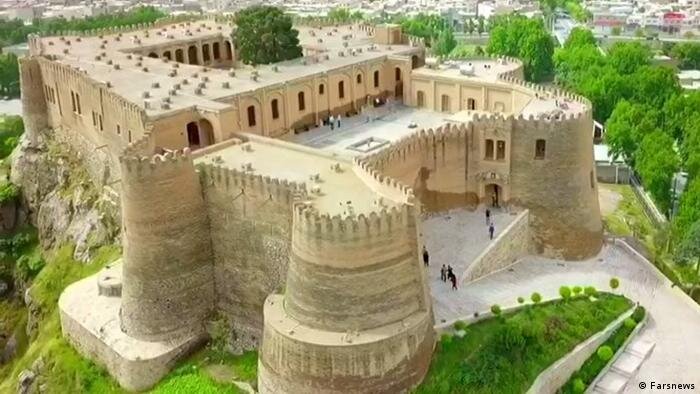Iran preparing to get Sassanid fortress, arch bridges on UNESCO list

TEHRAN – Lorestan province’s tourism chief has said they are preparing to apply to UNESCO for listing a Sassanid collection, which comprises a fortress and several (ruined) arch bridges, on the World Heritage list.
“Over the past 20 years, the directors of Lorestan’s cultural heritage, tourism, and handicrafts department have made great efforts to pave the way for the UNESCO registration of Falak-ol-Aflak fortress and its associated historical sites,” Seyyed Amin Qasemi said on Wednesday.
“Getting prepared for a possible UNESCO recognition, we are working on a proposed package that includes some historical (Sassanid) bridges as well,” the official said.
Located in Khorramabad, the capital of Lorestan, the unmissable eight-towered fortress dominates the city as one of the most visited travel destinations in the region for both domestic and foreign sightseers.
The fortress seems particularly imposing and dramatic when floodlit at night, offering picturesque views of its encircling crenelated battlements.
Experts believe that the ensemble is comparable with similar works in Naqsh-e Rostam, Naqsh-e Rajab, Tape Chugan, and Firuzabad in Fars province.
In 2018, UNESCO added an ensemble of Sassanian historical cities in southern Iran -- titled “Sassanid Archaeological Landscape of Fars Region”-- to its World Heritage list. The ensemble is comprised of eight archaeological sites situated in three geographical parts of Firuzabad, Bishapur, and Sarvestan. It reflects the optimized utilization of natural topography and bears witness to the influence of Achaemenid and Parthian cultural traditions and of Roman art, which later had a significant impact on the architecture and artistic styles of the Islamic era.
The Sassanid era is of very high importance in the history of Iran. Under Sassanids, Persian art and architecture experienced a general renaissance. Architecture often took grandiose proportions such as palaces at Ctesiphon, Firuzabad, and Sarvestan which are amongst the highlights of the ensemble.
Crafts such as metalwork and gem-engraving grew highly sophisticated, yet scholarship was encouraged by the state. In those years, works from both the East and West were translated into Pahlavi, the language of the Sassanians.
Rock-carved sculptures and bas-reliefs on abrupt limestone cliffs are widely deemed as characteristics and striking relics of the Sassanian art, top examples of which can be traced at Bishapur, Naqsh-e Rostam, and Naqsh-e Rajab in southern Iran.
Efforts made by the Sassanids also yield a revival of Iranian nationalism took place, for example, Zoroastrianism was declared the state religion.
The dynasty evolved by Ardashir I and was destroyed by the Arabs during the period 637 to 651. The dynasty was named after Sasan, an ancestor of Ardashir I.
Under his leadership who reigned from 224 to 241, the Sassanians overthrew the Parthians and created an empire that was constantly changing in size as it reacted to Rome and Byzantium to the west and the Kushans and Hephthalites to the east, according to Britannica Encyclopedia.
At the time of Shapur I (reigned 241 CE–272), the empire stretched from Sogdiana and Iberia (Georgia) in the north to the Mazun region of Arabia in the south; in the east, it extended to the Indus River and in the west to the upper Tigris and Euphrates river valleys.
AFM
Leave a Comment